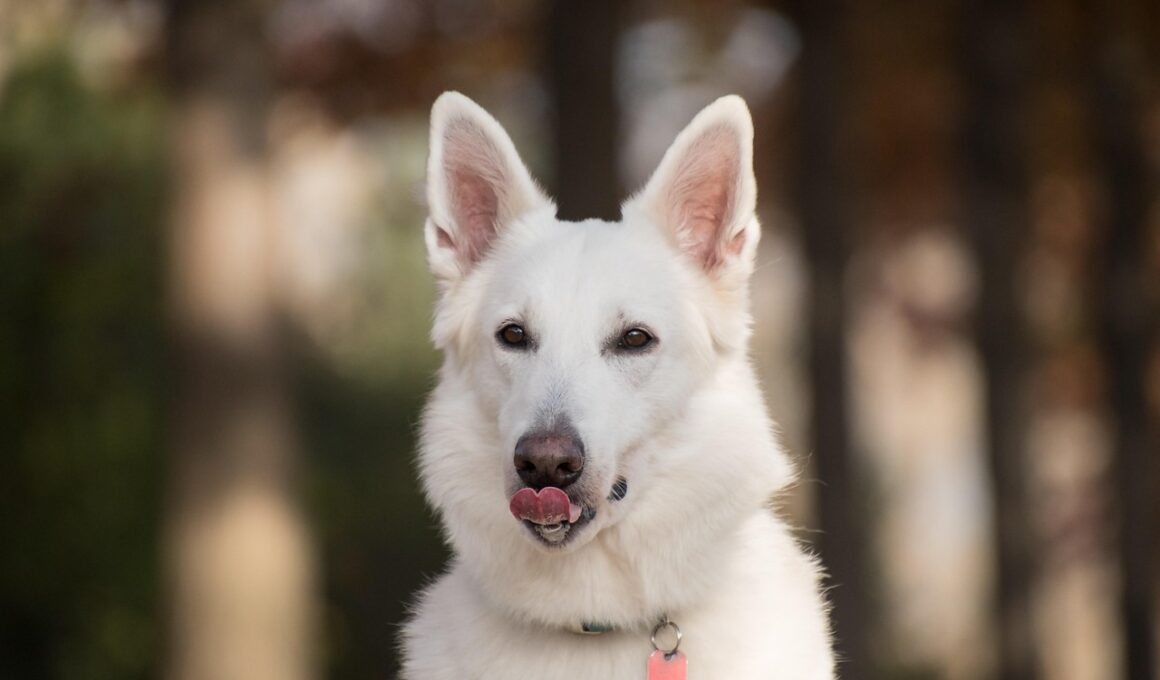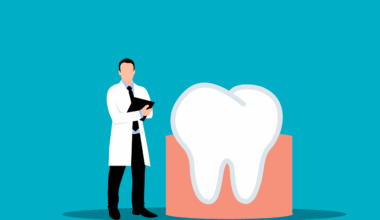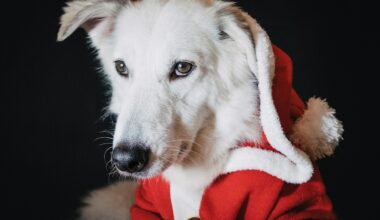Understanding Why Dogs Lick: Common Reasons Explained
Dog licking behavior is often misunderstood, leading to confusion among pet owners. There are multiple reasons why dogs lick themselves, other dogs, or even their human companions. The most common reason is a form of communication. Dogs lick to express affection, which is a natural instinct. When they lick, they often seek to remind their owners of their bond. Another reason dogs lick is to gather information about their environment, as their taste buds and sense of smell are closely linked. Moreover, dogs might lick to get attention, which is often reinforced by the owner’s reaction. When a dog realizes that licking generates a response, they may do it more often. It’s crucial to distinguish between normal licking and compulsive licking. Compulsive licking can lead to skin irritations, which may require veterinary attention. Furthermore, licking can also relieve stress and anxiety for some dogs, acting as a calming mechanism. Overall, understanding the reasons behind your dog’s licking can improve your relationship and enable you to respond appropriately to their needs.
One common cause of licking behavior is boredom. Dogs, particularly those that are not provided ample physical or mental stimulation, may resort to licking as a way to entertain themselves. This behavior can become habitual if not addressed. To help mitigate boredom, dog owners are encouraged to engage their pets in various activities such as fetch, tug-of-war, or even puzzle toys. These activities can not only help reduce licking but also promote better behavior overall. Another aspect of licking is that it can indicate discomfort or pain in dogs. If a dog is constantly licking a specific area of their body, it may suggest an underlying health issue that requires veterinary intervention. Possible issues include allergies, parasites, or infections, which should be diagnosed and treated by a professional. Paying close attention to licking patterns can provide valuable insight into your dog’s health status. Additionally, remember that excessive licking can lead to more serious problems, such as hot spots, and prompt action is required in these cases. Regular check-ups at the vet’s office can help prevent these issues from escalating.
Affection and Bonding Through Licking
A significant reason dogs lick is to display affection, which mirrors behaviors seen in their wild ancestors. Wolves, for instance, lick each other as a sign of submission or to reinforce social bonds. When a dog licks its owner or other dogs, it often signifies love, trust, and a request for companionship. This licking behavior fosters social interaction and establishes relationships. It is important to recognize that while licking can signify affection, it can also be a learned behavior. Dogs quickly pick up on when their owners respond positively to licking, reinforcing this behavior. Owners can encourage affectionate licking by providing positive affirmations and gentle petting. Sometimes licking can also occur during stressful situations. Dogs may lick more frequently when faced with unfamiliar people, anxiety-inducing situations, or during changes in their environment. Observing when and why your dog licks can provide insights into their emotional state. Therefore, recognize the signals your dog sends through licking and respond accordingly to strengthen your bond while addressing their emotional needs effectively.
In some instances, licking can be a result of anxiety and boredom, particularly for dogs that are left alone for long periods. Separation anxiety is a common condition that can lead to excessive licking as a coping mechanism. If your dog seems anxious, consider implementing a routine to alleviate their stress levels. You may obtain help from a trainer or behaviorist who can teach techniques to reduce anxiety. Providing your dog with adequate exercise, mental stimulation, and safe spaces can significantly reduce anxiety-driven licking behaviors. Moreover, ensure your dog’s environment is enriching, with toys and games to prevent boredom while you are away. Counter-conditioning techniques, such as offering treats in timed intervals, can also help redirect your dog’s focus away from licking. For long-term solutions, be patient, as it may take time to modify behavior. Consider discussing any persistent issues with your veterinarian, who can recommend further interventions, including anti-anxiety medications if necessary. Ultimately, keeping a watchful eye on your pet during their licking episodes can lead to a better understanding of their emotional and physical states, thereby fostering a healthier relationship.
Licking and Health Concerns
Frequent licking can sometimes signal health problems that need addressing. For instance, excessive licking of paws may indicate allergies or irritations. Dogs can be sensitive to various allergens, ranging from food to environmental factors. Allergic reactions can lead to persistent itching and discomfort, prompting your dog to lick as a way to alleviate the irritation. If you notice any changes in your dog’s licking behavior, a consultation with your veterinarian is crucial. They can perform tests to identify any allergies or other underlying conditions. Moreover, skin infections can occur because of licking, leading to complications if untreated. Identifying the root cause of the excessive licking is paramount in preventing further health issues. Sometimes, hormone imbalances and other internal conditions may manifest through excessive licking as well. Therefore, keeping a journal of your dog’s licking habits can provide insights for your veterinarian during consultations. Regular grooming and maintaining healthy skin can contribute to reducing licking behaviors. A proactive approach to your dog’s health significantly impacts their overall well-being, ensuring that any issues are taken care of promptly.
Behavior modification is often necessary when it comes to managing excessive licking in dogs. This may involve redirecting your dog’s attention when they begin to lick, using commands to distract them. Offering toys or engaging them in their favorite activities can effectively shift their focus elsewhere. Consistency is key in reinforcing positive behaviors while reducing licking. Train your pet to respond to commands like “leave it” or “no lick” to divert them from licking behaviors. Additionally, consider using deterrent sprays that can discourage licking on specific areas where excessive licking is observed. Make sure to monitor your dog’s responses to these training techniques and adjust accordingly for the best results. Remember that patience is essential, as behavior modification can take time to take effect. Celebrating small victories along the way encourages your dog to learn new behaviors and strengthens your bond. Establishing a routine that includes proper exercise, social interactions, and training sessions plays a critical role in reducing licking behavior. As you navigate through this journey with your furry friend, enjoy each step while promoting a healthy, loving relationship.
Conclusion: Expect Licking in Dogs
In conclusion, understanding dog licking behavior is crucial for pet owners seeking to enhance their relationship with their dogs. While licking serves various functions, such as communication and affection, it can also indicate boredom, anxiety, or health issues. By recognizing the intentions behind your dog’s licking habits, you can respond more appropriately, ensuring their emotional and physical needs are met. Engaging your dog in stimulating activities, establishing routines, and fostering a nurturing environment will minimize unwanted licking behaviors. Additionally, always consult with your veterinarian when excessive licking occurs, as they can offer invaluable insights into your dog’s health. Collaboration with professionals can provide strategies tailored to your dog’s unique disposition and behavior. Remember to enjoy the lighter moments that accompany dog ownership, including those affectionate licks. They remind us of the deep bonds we share with our pets and how communication transcends words. Ultimately, a well-informed dog owner is better equipped to nurture a happy, healthy, and balanced relationship with their dog. Now you can enjoy the affectionate licks while ensuring that your dog remains healthy and content, providing mutual joy for both owner and pet.
As responsible pet owners, understanding the reasons behind dog licking behavior allows us to respond empathetically and effectively. By recognizing and addressing signs of distress, we create a more harmonious living environment for our furry companions. Therefore, observing their actions will help you discern why they lick and how best to assist them. Both affection and discomfort can be conveyed through this singular behavior, making it critical to observe their patterns closely. Engaging in recommended practices and approaches tailored to your dog’s needs creates a supportive atmosphere that minimizes undesirable licking behaviors. In this way, we can appreciate the loving gestures while attending to any underlying issues. Informed pet ownership promotes your dog’s health and happiness, creating a win-win situation for both of you. As such, every lick from your dog can strengthen your bond, while also ensuring that their needs are adequately supported. So, take the time to educate yourself about your dog’s behavior and stay attuned to their needs. Together, you can share countless enjoyable moments, filled with routine behaviors reaffirming your affectionate relationship.


